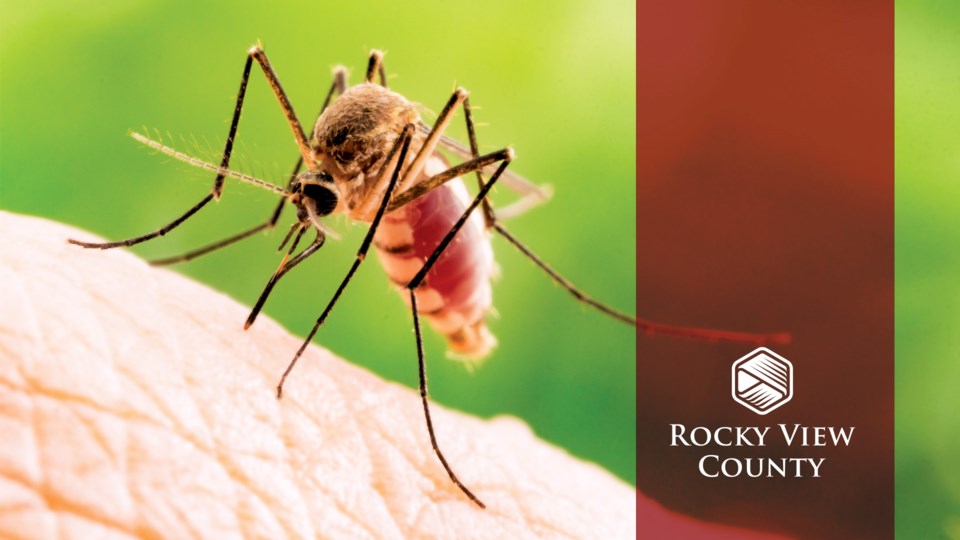The annual Managing Mosquitoes webinar will help residents of Rocky View County (RVC) minimize the impact of the pesky insects on their backyard this season, as well as learn about the importance of bats to the environment.
The webinar will take place online from 6 to 8 p.m. on May 4 and will provide strategies to reduce mosquito populations on rural properties, such as removing standing water in tire tracks, puddles, and so on.
Certain areas within Rocky View County may experience more issues with mosquitoes than others, especially if there is a lot of standing water, according to Laura Poile, RVC’s agricultural services officer.
“If we have a wet year, we tend to get more complaints regarding mosquitoes than if we have a dry year,” Poile said. “Mosquito populations tend to correlate with the weather – more water means more standing water, [which means] more mosquitoes.”
Another strategy that will be explored during the webinar is putting up bat homes. Bats consume mosquitoes as a food source, which helps in reducing their population, said Susan Holroyd, who will present during the webinar on behalf of the Alberta Community Bat Program.
“A number of bat species, including the Little Brown Myotis, like to hunt over sites with slow moving water like ponds, wetlands and pools in rivers,” she said. “These sites are also habitat for emerging mosquitoes and small insects like chironomids or midges.
Bats eat up to their own weight in insects each night, Holroyd stated, which benefits more than just the average county resident barbecuing in their backyards this summer.
Studies in the U.S. have estimated the value of bats to agriculture is over $3.7 billion USD a year, according to Holroyd, and research from other countries has found that bats have both an ecological and economic value.
Alberta has nine different species of bats that eat all different types of insects, including flies, moths, beetles, emergent aquatic insects and even spiders, Holroyd explained.
The Alberta Community Bat Program of Wildlife Conservation Society Canada (WCS) is currently investigating the diets of Alberta bats and will be reporting on the species of insects consumed by bats using DNA found in bat guano. The results of that study will be available next year and will look specifically for insects identified as agricultural pests.
“It is likely that bats also consume large numbers of insects that are considered pests to the forestry industry and we are also investigating to see if bats consume insects that harass cattle,” Holroyd said.
Species of bats in the deserts of southwest U.S. and Mexico pollinate the agave plant that is critical for the production of tequila and there are many fruit-eating bats that pollinate the flowers of important crops in the tropical world. Bananas, durian, mango and many other products rely on bats for pollination, Holroyd explained.
“Fruit-eating bats are efficient seed dispersers, pooping seeds of fruit trees over open areas where seeds germinate and grow to replace lost forest areas,” she said.
While there are no fruit-eating or flower-pollinating bats in Alberta, the strictly insect-eating bats serve a purpose in keeping the mosquito population down in Alberta.
The information from the upcoming webinar will provide Rocky View County landowners with tools to reduce mosquito populations in their backyards, including the info on bats.
The County does not spray for mosquitoes, but has treated standing water on some County land using a larvicide.
Those interested in the webinar can register for Managing Mosquitoes via ow.ly/jbyA50IRkB




